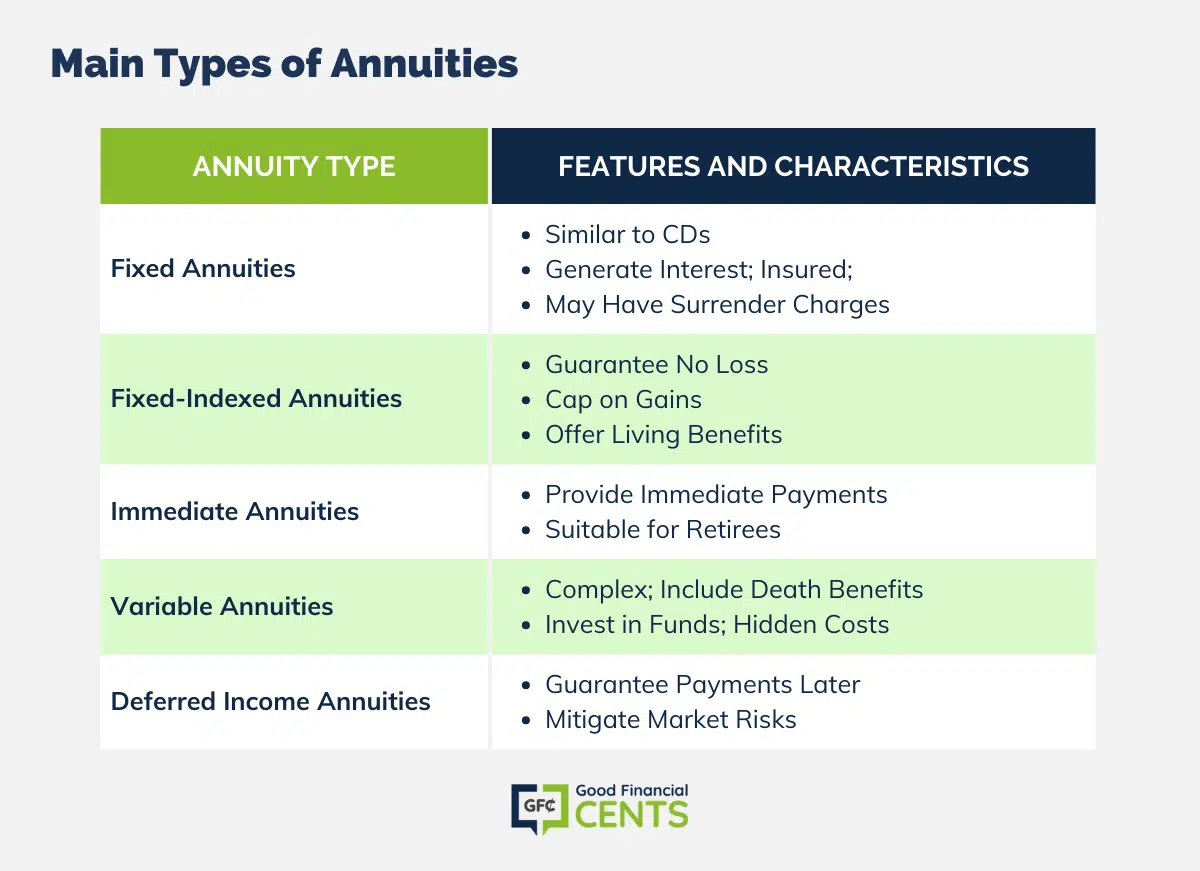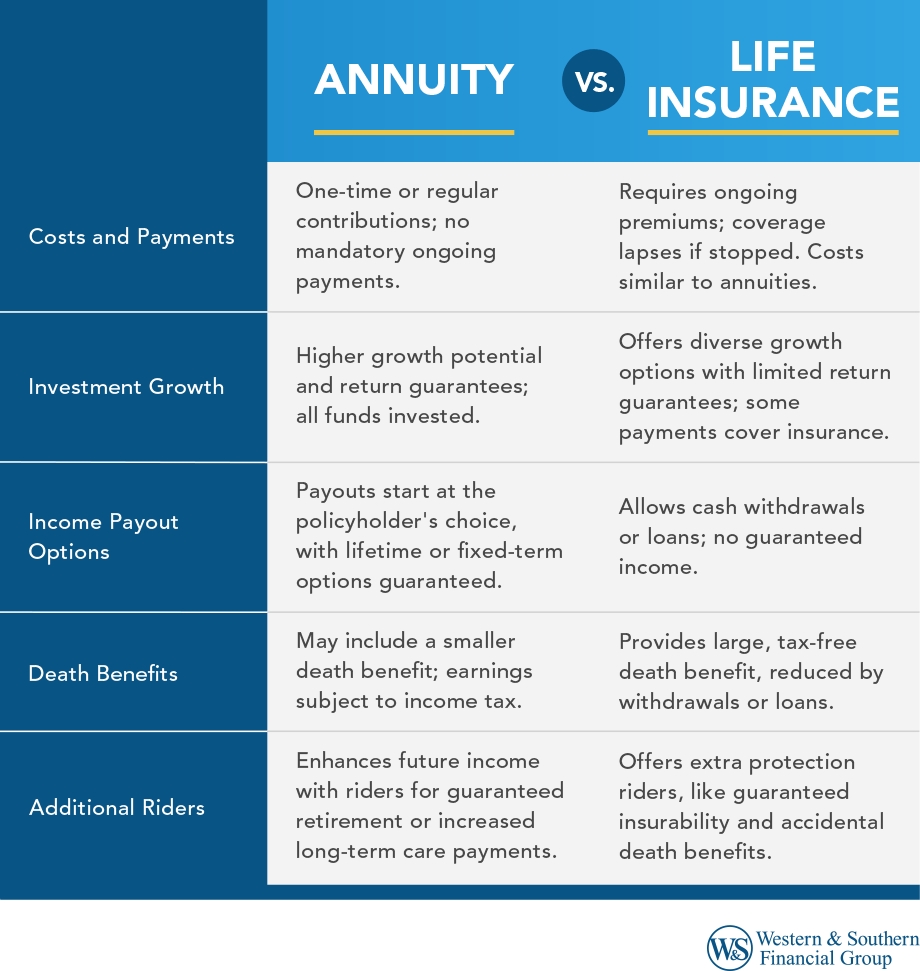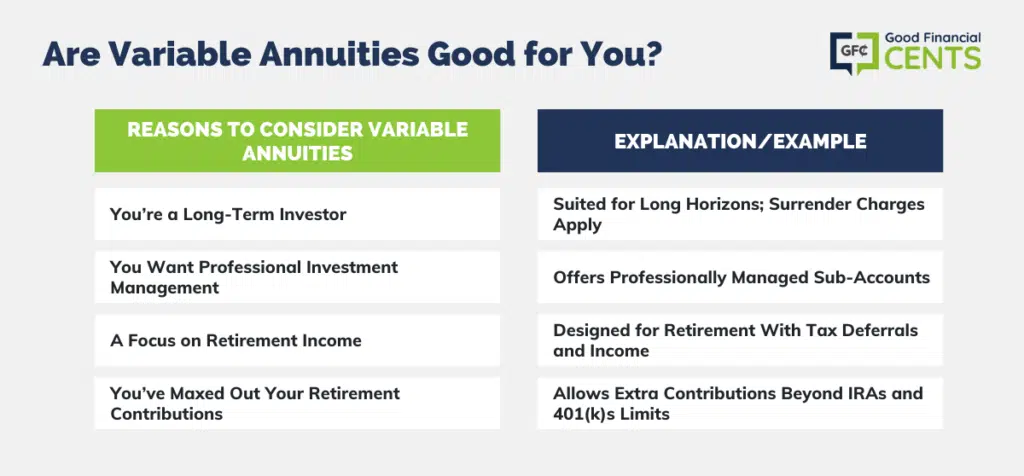All Categories
Featured
Table of Contents
Just as with a repaired annuity, the proprietor of a variable annuity pays an insurance business a lump sum or collection of payments for the promise of a collection of future payments in return. As mentioned over, while a repaired annuity expands at a guaranteed, continuous rate, a variable annuity grows at a variable price that depends upon the performance of the underlying investments, called sub-accounts.

During the accumulation stage, possessions invested in variable annuity sub-accounts grow on a tax-deferred basis and are exhausted only when the contract owner takes out those incomes from the account. After the build-up phase comes the income stage. In time, variable annuity properties need to theoretically raise in worth till the contract owner chooses he or she would love to begin taking out cash from the account.
The most considerable problem that variable annuities typically present is high price. Variable annuities have several layers of costs and costs that can, in aggregate, develop a drag of up to 3-4% of the agreement's worth each year.
Understanding What Is Variable Annuity Vs Fixed Annuity A Closer Look at How Retirement Planning Works Breaking Down the Basics of Investment Plans Benefits of Choosing the Right Financial Plan Why Choosing the Right Financial Strategy Is Worth Considering Fixed Interest Annuity Vs Variable Investment Annuity: A Complete Overview Key Differences Between Fixed Vs Variable Annuity Pros And Cons Understanding the Rewards of Long-Term Investments Who Should Consider Strategic Financial Planning? Tips for Choosing the Best Investment Strategy FAQs About Variable Annuities Vs Fixed Annuities Common Mistakes to Avoid When Choosing Fixed Indexed Annuity Vs Market-variable Annuity Financial Planning Simplified: Understanding Your Options A Beginner’s Guide to Smart Investment Decisions A Closer Look at Variable Annuity Vs Fixed Annuity
M&E cost fees are computed as a portion of the agreement value Annuity issuers hand down recordkeeping and other administrative prices to the contract proprietor. This can be in the type of a level annual cost or a percent of the agreement worth. Administrative fees may be included as component of the M&E risk fee or may be analyzed individually.
These charges can vary from 0.1% for passive funds to 1.5% or even more for proactively taken care of funds. Annuity agreements can be tailored in a number of methods to offer the particular demands of the contract owner. Some typical variable annuity bikers include ensured minimum buildup advantage (GMAB), guaranteed minimum withdrawal benefit (GMWB), and guaranteed minimal income benefit (GMIB).

Variable annuity payments offer no such tax reduction. Variable annuities often tend to be extremely ineffective cars for passing riches to the future generation because they do not delight in a cost-basis adjustment when the original contract owner passes away. When the owner of a taxed investment account dies, the cost bases of the investments kept in the account are adapted to mirror the marketplace costs of those investments at the time of the owner's fatality.
Analyzing Pros And Cons Of Fixed Annuity And Variable Annuity A Comprehensive Guide to Annuities Variable Vs Fixed Defining Variable Vs Fixed Annuities Benefits of Fixed Vs Variable Annuities Why Fixed Annuity Vs Variable Annuity Is Worth Considering Pros And Cons Of Fixed Annuity And Variable Annuity: Simplified Key Differences Between Different Financial Strategies Understanding the Key Features of Tax Benefits Of Fixed Vs Variable Annuities Who Should Consider Strategic Financial Planning? Tips for Choosing Fixed Annuity Vs Variable Annuity FAQs About Planning Your Financial Future Common Mistakes to Avoid When Planning Your Retirement Financial Planning Simplified: Understanding Your Options A Beginner’s Guide to Fixed Income Annuity Vs Variable Growth Annuity A Closer Look at What Is A Variable Annuity Vs A Fixed Annuity
Therefore, heirs can acquire a taxed financial investment profile with a "clean slate" from a tax viewpoint. Such is not the case with variable annuities. Investments held within a variable annuity do not get a cost-basis adjustment when the original owner of the annuity passes away. This indicates that any type of gathered latent gains will certainly be passed on to the annuity owner's heirs, together with the linked tax obligation problem.
One significant issue related to variable annuities is the potential for conflicts of passion that might feed on the part of annuity salesmen. Unlike a financial consultant, who has a fiduciary responsibility to make financial investment decisions that benefit the client, an insurance coverage broker has no such fiduciary commitment. Annuity sales are extremely profitable for the insurance policy experts that sell them due to high upfront sales payments.

Several variable annuity agreements contain language which positions a cap on the percent of gain that can be experienced by particular sub-accounts. These caps avoid the annuity owner from fully taking part in a portion of gains that might otherwise be appreciated in years in which markets produce considerable returns. From an outsider's point of view, presumably that financiers are trading a cap on financial investment returns for the previously mentioned ensured flooring on financial investment returns.
As noted over, give up costs can seriously limit an annuity proprietor's capability to move assets out of an annuity in the very early years of the agreement. Even more, while a lot of variable annuities allow agreement owners to take out a specified amount throughout the buildup stage, withdrawals yet amount usually result in a company-imposed cost.
Withdrawals made from a set rates of interest investment alternative might also experience a "market price adjustment" or MVA. An MVA adjusts the worth of the withdrawal to reflect any changes in interest prices from the time that the money was invested in the fixed-rate alternative to the moment that it was withdrawn.

On a regular basis, also the salesmen that market them do not completely understand just how they function, and so salesmen often victimize a buyer's emotions to sell variable annuities as opposed to the advantages and suitability of the items themselves. Our company believe that investors should completely understand what they own and exactly how much they are paying to own it.
Understanding Fixed Index Annuity Vs Variable Annuities Everything You Need to Know About Tax Benefits Of Fixed Vs Variable Annuities Breaking Down the Basics of Investment Plans Pros and Cons of Fixed Annuity Or Variable Annuity Why What Is Variable Annuity Vs Fixed Annuity Matters for Retirement Planning How to Compare Different Investment Plans: A Complete Overview Key Differences Between Different Financial Strategies Understanding the Key Features of Long-Term Investments Who Should Consider Fixed Annuity Vs Equity-linked Variable Annuity? Tips for Choosing the Best Investment Strategy FAQs About Planning Your Financial Future Common Mistakes to Avoid When Choosing a Financial Strategy Financial Planning Simplified: Understanding Fixed Income Annuity Vs Variable Annuity A Beginner’s Guide to Smart Investment Decisions A Closer Look at Fixed Vs Variable Annuity Pros Cons
Nonetheless, the very same can not be claimed for variable annuity assets kept in fixed-rate financial investments. These properties legally come from the insurance provider and would as a result be at threat if the company were to fall short. Similarly, any warranties that the insurer has actually agreed to offer, such as an assured minimal revenue advantage, would certainly be in question in the occasion of an organization failing.
Therefore, potential buyers of variable annuities must recognize and take into consideration the economic condition of the releasing insurer prior to becoming part of an annuity contract. While the benefits and disadvantages of various sorts of annuities can be debated, the genuine problem bordering annuities is that of suitability. Place simply, the inquiry is: that should possess a variable annuity? This inquiry can be challenging to address, provided the myriad variations offered in the variable annuity world, yet there are some standard guidelines that can assist capitalists decide whether or not annuities must play a duty in their monetary strategies.
As the saying goes: "Buyer beware!" This write-up is prepared by Pekin Hardy Strauss, Inc. Annuity payout options. ("Pekin Hardy," dba Pekin Hardy Strauss Riches Administration) for educational purposes just and is not meant as an offer or solicitation for company. The details and data in this post does not comprise legal, tax obligation, accounting, financial investment, or various other expert recommendations
Table of Contents
Latest Posts
Exploring the Basics of Retirement Options Key Insights on Your Financial Future What Is Fixed Interest Annuity Vs Variable Investment Annuity? Features of Pros And Cons Of Fixed Annuity And Variable
Highlighting the Key Features of Long-Term Investments Key Insights on Your Financial Future Breaking Down the Basics of Investment Plans Advantages and Disadvantages of Immediate Fixed Annuity Vs Var
Analyzing Strategic Retirement Planning A Comprehensive Guide to Pros And Cons Of Fixed Annuity And Variable Annuity What Is Annuities Variable Vs Fixed? Features of Smart Investment Choices Why Choos
More
Latest Posts